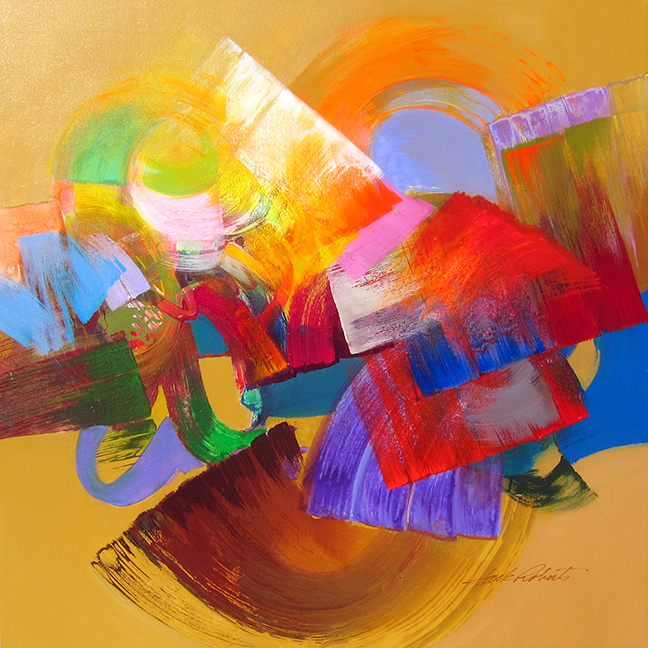By Linda Carter Holman
It must have something to do with my essence and the world born into…Oklahoma, South America, the Southwest, and California.
My father and his grandfather were both story tellers. Guess I inherited that gene. Being men, their stories seemed to be more about their adventures out in the world. My tales are based more on feelings… observed in simple everyday moments of life.
Once upon a garden ...this story is based on events from my growing up to which I now have two large tortoises in the yard as living symbols.
The first part of my painting life, as I see it now was devoted to learning a language…technique, developing characters…mostly a woman’s perspective. I decided early on to use women and children as my story telling characters. One day I noticed that my men had a feminine/masculine look and the women masculine/feminine. So from then on woman became my symbol for both. Though I still picture the man child.
“The creation of art
in all it’s diverse forms
allows each one of us
to sing the song anew.”
Along the way......
(the dark haired child...boy/girl)
The first part of my painting life, as I see it now was devoted to learning a language…technique, developing characters…mostly a woman’s perspective. I decided early on to use women and children as my story telling characters. One day I noticed that my men had a feminine/masculine look and the women masculine/feminine. So from then on woman became my symbol for both. Though I still picture the man child.
Creating a Personal Myth
Here on the Journey
(red Book, blue vase with fish and Mount Fuji) |
 |
Myth is a feature of every culture.
I guess, Mythology has always been there in the background of my work. Throughout time man has used symbols to give clues to what I refer to as “The Mystery of Life.” Over the years I have collected a variety of images that have developed special meanings for me in my narratives…like the blue vase with goldfish that appear repeatedly in my stories.The red book has been there from the beginning. My stories on canvas were once more genre scenes.
In nature. Now they have become more personal and symbolic.
“Standing witness to the world that surrounds me…
Translating ideas, impressions and observations…
Getting to play all the parts in the story as it unfolds
With color, form and thought…
Each painting reflecting the world at particular moments in my life…
Accented with personal symbols
Collected over my 48 years of painting”
Crossing over
(fish, boat and swan plus my special character)
(fish, boat and swan plus my special character)
Pilgrimage to Mount Fuji ........(Mount Fuji a new symbol)
“the paintings are symbolic tales
Personal stories
Characters playing their parts
In witness to the all”

































